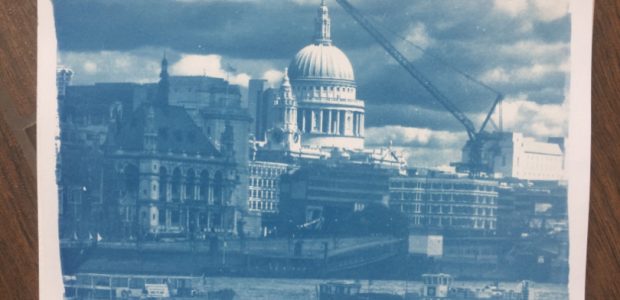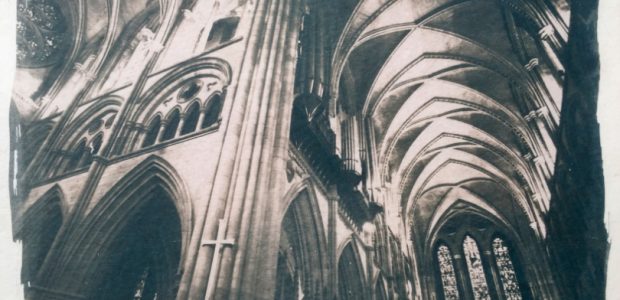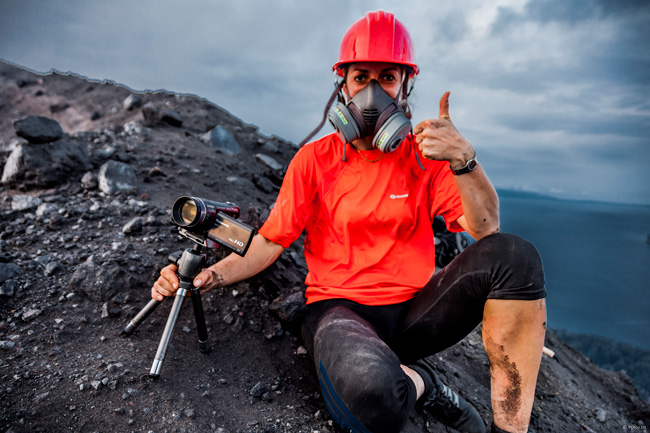


What are time-lapses?
Since the documentary movies “Baraka” (Ron Fricke, 1992) and “Planet Earth“ (BBC, 2006) the magic of the time-lapses caught the attention of many photographers and filmmakers. The viewer perceives differences by time-lapses, which are otherwise hardly discernible because the movements alter very slowly in real time. Good examples are a sunset, the growing shadows or the clouds running in the sky. Many of us became aware of the spinning starry night sky or the dancing of the northern lights only by the time-lapse technique.
Yet, this way of capturing movements is nothing new. Already in 1897 Georges Mèlies used the cinematographic technique of the under cranking in his movie “Carrefour de L’Opera”.
Another stone mark in the time-lapse history was the BBC documentary series “The Private Life of Plants”: very costly set-ups with lots of cameras under the controlled conditions of the glass houses made it possible to reveal the growth of the plants.
A normal video camera records 25 pictures per second (or thirty if the camera was bought in USA). By under cranking images are recorded at a lower rate than the actual play rate of the movie. You may capture a landscape picture every second for ten minutes (that means a rate of one picture per second) but play all the captured pictures in the finished video at a rate of 25 pictures per second. Thus you obtain a smooth movement with a quick pass of time (instead of the ten minutes of the recording you get twenty-four seconds of playback). This effect lets you convey a certain message of your story. You can literally feel the hectic pulse of the mankind while watching the time-lapses in “Baraka”. Time-lapses suit well for introducing a new theme showing a rapid progress of time (a new day, a new season, a new stage in life etc.) or for depicting the rhythm of a city.
This film technique was reserved for a long time only to filmmakers with access to large budgets. For producing time-lapses they would use large amounts of expensive film rolls, high-end cameras and several survey teams. Special control devices would send impulses to cameras to record images at certain preset intervals over days and weeks. For shorter periods of time the cameraman would simply film in real time and in the post-production cut out images from the film at certain intervals.
The broadcaster BBC used forty film teams over a period of five years to produce “Planet Earth”. Only by international cooperation they could cover the high production and distribution costs.
But the new digital era of the visual arts allowed the development of inexpensive alternatives. The time-lapse technique became quickly accessible also to amateurs and professional filmmakers with tighter budgets.
Nowadays even the consumer video cameras have a time-lapse function (often called interval recording) and the DSLR photo cameras open completely new worlds in this field. The light sensitive DSLRs with large sensors allow the capture of raw images of the rotating stars in the night sky or the dances of the northern lights.

This was not possible in the analog time of the film cameras – at least the results were not comparable to the present possible outcome.
Thus the digital time-lapse technique links the photography with the filming: the single raw images of a series are first edited in a photo-software and afterwards stitched together to a video clip in a NLE (non linear editing) software. Especially the video portal Vimeo hosts a huge amount of short films that are apparently a mere sequence of time-lapses. A photographer capturing time-lapses will probably concentrate more on a good picture-framing and the light situation. A filmmaker will pursue more the story and the action in the scene. In order to create a successful time-lapse video or to insert it as a dramatic effect into a film both the photographic and film perspectives are essential. Before I go into details I will list shortly the various time-lapse possibilities available on my documentary travels.
How do time-lapses come into being?
An easy way to obtain a time-lapse is to simply let my video camera record a scene over a long period of time. The memory cards are affordable compared to the previous used tapes or even film rolls and the digital edit techniques make the cutting of the video material an easy-going issue. The recorded scenes are compressed in the software and played back at a higher speed rate (at two-times, three-times or eight-times the original speed). During this process single images are dropped following a certain algorithm. This is method an option if for certain reasons I want to use my main video camera, which does not feature an interval recoding.

Yet as it eats up the memory on my cards I prefer to use my backup camera if the light conditions are not problematic. This consumer camera (a Panasonic HDC-TM700) allows me to record at certain preset intervals but only in manual modus. And that for a very good reason: the automatic modus of the camera may change the focus or the white balance during the recording over longer periods of time. This is something to be strictly avoided so when “time-lapsing” it is best to use only manual settings whenever possible. By this method I can quickly insert the clip directly into the timeline of my editing program. And I avoid the so-called flickering, that is a problem, which I explain when describing the third method. A video camera opens steplessly the aperture so that there are not even small exposure differences between two following images.
These two methods save you a lot of time and headache.

Still the big disadvantage is their lack of flexibility: before starting the time-lapse you have to think thoroughly about the settings because you cannot change too much the contrast, white balance and so on in post-production. Last but not least, unless you own a super expensive 4K video camera the time-lapse will be limited to HD resolution which doesn’t allow you too much of good-looking Ken Burn effects in the post.
The third way to record time-lapses offers the most possibilities but requires also the most concentration, accuracy and practice. You can take a series of still pictures at certain intervals with a photo camera and edit them later to a video. For this an iPhone would be already sufficient but the majority of the time-lapse aficionados use a DSLR camera for best results. The high light sensitivity achieved by good lenses and large sensors allows you to take images in light conditions where even a high-end video camera reaches its limits. For example, the “Holy Grail” of the time-lapse technique, that is the transition from day to night (or vice versa) requires altering the set-ups (the shutter speed and ISO) during the take. This is possible with a DSLR camera but not with a video camera. Additionally the possible lossless compression of the raw images gives you a lot of flexibility in the post-production as to brightness, white balance, contrast etc.
The difference in resolution between the 5K (or more) images and the final HD video gives you a lot of room for playing with Ken Burns, panning or tilting effects.
Yet there are also certain disadvantages that go along with this method. As a filmmaker I am acquainted with the photographic notions of framing a scene, proper exposure, focus and so on. Yet when I started to use this method I had to learn first the specific photographic capture techniques and the way a DSLR works. For example I had to take into consideration the buffer time a DSLR needs to store a raw image on the card. If the capture interval is shorter than the camera needs to empty its cache memory then it may happen that some images are not stored, producing ugly gaps in my time-lapse. This again makes a time-lapse with a DSLR more time-intensive because I cannot choose intervals under one or two seconds. Plus I need a lot of storage. Three to four sequences of raw night shots, which run over four hours, may easily fill a 64 GB CF card. The editing and storage of the processed images also cries for fast hard drives in the realm of terabytes. I cannot just insert the clip into the timeline and voilà there I have my time-lapse. With this method I definitely need more time to prepare the images of the sequence, not to forget the time I needed to learn the software for editing raw images. And what is the most annoying: if I grab a time-lapse with my video camera I can check the outcome on my display immediately afterwards. Time lapsing with a DSLR is like buying a pig in a poke, especially when I travel far to get my shots. Only back home I can tell for sure if the sequences were a success or a failure. (Due to weight issues I don’t carry a notebook. Besides I don’t have time to edit the sequences on my travels.)
I brought several northern lights sequences back home from my trip to Lapland (in northern Norway) last year. When looking through them I found out that one with a great aurora borealis was completely messed up. During a shift in the camera position the focus displaced from its original position. My mistake was that I didn’t thoroughly check the focus again. On the small display at night it was very hard to immediately recognize that the motive was out of focus.
Time lapsing step-by-step
Lets have a more practical look on how a time-lapse comes into being by using a DSLR. In this part I will share my experiences that I had in the field far away from home.
The preproduction
At this stage I consider what when for how long and for what purpose I want to film, respectively to take the photographic sequence. These simple questions may help you to assemble the kit that suits optimal your needs for the intended project.
Equipment
– Of course you can complete your time-lapse project also by using an EVIL camera, like the micro 4/3 Panasonic GH3 or the GM1, which I also use quite often with good results. But when I go for the night sky I prefer a DSLR with a large sensor and fast lenses. As to the question what DSLR brand to choose for this purpose I didn’t have to think much over it. I have inherited a Canon 5D MKII (and than a MKIII) from my husband, who uses a Canon system for years. Also it turned out very practical to have access to his big arsenal of lenses. For this reason I won’t discuss here the pros and cons of other brands.

In night circumstances I use the ultra wide Canon lenses EF 14mm/f2.8 or EF 24mm/f1.4 and – in certain situations when I want to cover more oft he sky (in case of a northern lights show) – I take also the Canon Fisheye lens EF 15mm/f2.8.

During daytime I wouldn’t necessarily need a fast lens. These lenses have a very narrow depth of field with open aperture. In case of a time-lapse with a change of perspective (on a slider, with a panning head or during a hyper-lapse, that is a time-lapse while the photographer is walking around with his tripod-mounted camera) this may be a disadvantage, especially if you cannot change the focus during the session.
These lenses work best in difficult light conditions, like for example during a “Holy Grail” session (the transition from day to night or vice versa) or for capturing the starry night sky.
– If you intend a longer series of pictures than you definitely need a better way to trigger the capture than to push the button by hand every time. Most of the cameras feature an internal function for interval capture (like Nikon, Pentax, Panasonic and even the Gopro).
For the Canon 5D I had to look for an external solution. One possibility is an interval meter that triggers the button either by a radio signal or by cable. It works fine at day but the menu buttons are too small to hit them at night.
Besides I don’t have the patience to click through the menu when the aurora borealis is just dancing over my head.
That is why I prefer the alternative of the add-on software Magic Lantern designed for certain Canon cameras – unfortunately there is no stable version for the 5D MKIII yet. But with the 5D MKII I prepare the settings before looking at the big display of the camera and just hit the start button when the northern lights appear.
The third possibility comes from a device called CamRanger, which controls the camera by wireless signal. There is a free app for IOS devices that allows me to modify specific camera settings, including to trigger at certain intervals. Considering the easy handling of it and the offered possibilities this device is my favorite tool. I get a high-res live preview on my IPad, I can zoom in to focus precisely and set the time-lapse parameters while sitting in the warm car.
However I encountered situations when I hadn’t enough external tools at hand. One night a fantastic aurora borealis unfolded its rays over a Norwegian fjord from west to east above our heads. One Canon 5D MKII with a 14mm lens was directed towards east and was controlled by the Magic Lantern software. The second camera, a MKIII with a 24mm lens overviewed the western horizon and captured the images by the CamRanger. But I had a gap between the perspectives of the two cameras. So I grabbed the third one, a back-up camera to cover the rest of the sky. As I didn’t had an external trigger device at hand for the third Canon I pushed the button by hand as soon as the photo was stored on the card. After one hour in the freezing north wind I couldn’t feel my fingers anymore but I had the aurora.

Of course this manual method is out of the question when the camera is moving along a slider. A lot of slider producers jumped on the new trend for time-lapses and equipped their sliders with motorized control heads that trigger the cameras by a cable connection. By using a motorized head on a slider I can not only capture automatically pictures at given intervals but I achieve also a change in the perspective during the sequence. A lot of time-lapse photographers use the system solutions from Kessler Crane or the lower priced alternative from Dynamic Perception. But searching on the Internet you may find a huge amount of budget sliders. I use an aluminum slider by Igus with a custom-made control head designed for me by Pocketslider. However a slider, or dolly, makes sense only if you have a nice motive in the foreground. A knobbed trunk or a bizarre rock detaches itself from the background during the movement of the camera along the slider and your time-lapse gets an exquisite 3D touch.

If you don’t use a slider than it is imperative to put your camera on a tripod when taking a time-lapse. When choosing a tripod and a head you may consider the overall stability of the whole set. The camera and the attached lens have to be inert over a longer period of time even when wind is going. I would recommend a tripod with a hook attached to the center column. You can hang a load to the hook (be it a sand filled sack or your backpack) but take care that the load has contact with the ground otherwise it may swing in the wind and make everything worse. This way I can use lightweight tripods, which I can carry easier in a rough terrain. On Iceland the katabatic winds from the glaciers shook the tripod so strongly that I had to fasten the center column with a tension belt to a heavy rock in order to prevent the whole rig from flying away.
Although the batteries go without saying along with the operation of a camera I will write some words about this topic. If a battery dies while filming or photographing there is normally no problem to interrupt the activity and to change it with a fresh one. In case of a time-lapse you have to preserve the continuity of the shots otherwise you get a leap in the sequence. A Canon battery lasts an average of four hours at normal temperatures but its life drops to one or two hours at freezing temperatures. For time-lapses in the Arctic regions I use therefore a “diy”, cold-resistant energy source made up of six LiO, high performance cells (Panasonic NCR18650B ). The camera ran at temperatures far below zero for twelve hours.

In addition to the hardware mentioned above there are also various software programs and mobile apps that make your life easier as a time-lapse photographer. For example when planning a rough route for my time-lapse trip I use not only travel guides and blogs from the Internet but also Google Earth, the maps from Navigon or Skobbler (which are accessible on my iPhone), the great weather app from Weather Map+, the Aurora Forecast or the time-lapse and photo planning app Photo Pills (this app helps you also to calculate the necessary length of the time-lapse, the intervals and the later video outcome).
Preliminary considerations and production
Before I start to rig up my camera on location I quickly go through following questions, which help me to set up the time-lapse correctly:
– What do I want to capture? It helps a lot to spend some thought on the choice of the motive. Unlike the situations of normal photographing or filming in real time, when time lapsing the picture frame will alter in the next half an hour. What changes in the picture and what remains the same? As I want to demonstrate a shift in time by my lapses obviously I will look for motives that will change its shape or position. The passing clouds, the wandering shadows or the spinning stars in the night sky may deliver impressing effects.

For more depth in the picture I choose a photogenic object in the foreground that does not change over the time. I avoid elements in the photo that move fast in real time, like branches or leaves in the wind. Also birds or animals may cause so-called aliens in the sequence if they appear only in one or two images and than disappear. I soften the fast movements of the waves or the flow of the water by choosing a low shutter-speed. For that I use a strong gray filter (ND Filters) to lower the light intensity.
– At what time of the day do I take the sequence?
When I started my first experiences with a DSLR I chose that times of the day when I could expect a constant light that is after sunrise. Later I tried to work also during the night. Night shots were more complex also because I couldn’t distinguish much on the camera display especially if the stars were really sharp. The autofocus would reach its limits so I had to take test photos and step by step reach thus the desired focus. But in both situations during the day and night the shutter-speed and the ISO don’t have to change its initial value. I will talk later about the aperture and white balance.
In case there are fast moving clouds, which may alter the light conditions very quickly it is best to go with shorter intervals between the shots to avoid the so-called staccato effect (later in the finished video clip you may get light and shadows jumping annoyingly around the scene).
The most difficult time-lapses are those that begin during daylight and end with a starry night sky or the other way around. That is why these types are called the “Holy Grail”.

In these situations the initial set-up values of the camera change during the sequence. Either the camera changes these settings automatically (in the automatic modus) or a third-party software alters the ISO and shutter parameters at certain paces during the transition from day to night. This is called bulb ramping. I found that both methods are quite unreliable and may destroy the time-lapse. Of course it was very convenient for me to let the camera run in automatic modus and wait until the night falls. But there are serious disadvantages: First, the automatic exposure reaches its limits when the first stars start to shine and the whole picture sinks into a black soup. Second, the camera automatic tries to adjust the aperture. But in case of a DSLR this doesn’t happen infinitely variable but it’s controlled mechanically and produces slight differences in the apertures of the photos. This leads to a light flicker in the sequences that is almost impossible to remove in the post-production. You may watch a very good example of how the mechanical control of the diaphragm works and how it leads to slight differences in its diameter from one picture to the next: View Video Here
Third, the camera adapts the automatic white balance to the present light temperature, which becomes colder when the sun has set. That also causes an unpleasant flicker in the sequence and it is very difficult to erase it in post.
As to the bulb ramping method the software cannot always identify correctly how fast the light changes considering that the twilight duration differs from the latitude or that clouds may influence the light conditions.
Thus the safest way to go is the manual method. I adjust the shutter speed and than the ISO manually as soon as the dynamic limit of the camera is reached (that is when the photo would be over or under exposed.) Of course there is always the risk that the intervals between two shots are too sort and I mistakenly turn the wheel into the wrong direction in my hurry. Or that I hit the camera in the dark (and here I have to mention that even the faintest light source could destroy your painfully taken time-lapse so get used to work in the dark). But this is when my little assistant comes into play. The CamRanger is a little device mounted on the cold shoe that I connect with the Canon by a cable. It sends the captured pictures including the histogram to my IPad by Wi-Fi so I can control the exposure. And the best is that I can adjust various parameters, like the ISO, aperture, focus, shutter speed, live-view, time-lapse intervals etc. just by tapping on my IPad screen – without touching my camera. It makes it possible to adjust the values during a Holy Grail even when it is dark. And if it is too cold outside I may hide in the car and watch the camera from inside.

When the picture gets too under (or over) exposed I adjust it for one or two f-stops to gain again a correct exposure by changing first the shutter speed (until I reach the time limit given by the intervals) and than by changing the ISO. I can level the generated leaps in the exposure later on in the post-production phase by a software program called LRTimelapse.
– How long should the time-lapse run?
If you plan to deal with this subject you need first of all a lot of time and a lot of patience. To shoot something quickly won’t function with time-lapses.

It takes at least a quarter of an hour just to look for a motive, to make considerations and to set-up your camera, including to make some test shots. The actual length of the sequence capture depends on three factors:
- The interval between two shots depending upon the situation. Generally I choose:
– one to five seconds for quickly moving clouds (like the cotton-wool clouds), people running through the frame, cars or objects fast passing by (like when taking photos from a car). An interval of a minimum of two seconds ensures enough buffer time for the camera to write the raw data on the card (In this case I prefer to use my Panasonic GM1 who uses a smaller raw data size and controls electronically the aperture and shutter. Thus I can choose shorter intervals and avoid the flicker.)
– ten seconds for sunsets or cirrus clouds
– ten to twenty seconds for wandering shadows, spinning stars at full moon and for a very active aurora borealis
– twenty to thirty seconds for hardly perceptible movements, for a high standing sun, for a weak and diffuse aurora borealis or for the stars when the night is very dark (but shutter speeds above twenty seconds may lead to star trails – however an interesting effect if desired)
– two minutes for fast growing plants or opening blossoms
These intervals are valid for wide-angle lenses. For tele-lenses shorter intervals may be more appropriate.
- The number of the taken photos: although the cards have significantly dropped in price for the last years I still have to be economical with the available memory especially on my longer trips. From my experience I know that I need around five to six hundred photos for a Holy Grail sequence. So if I plan to do several sequences of this kind, like on my trip to southwest of USA, I try to limit the other sequences to two hundred fifty or three hundred photos per time-lapse (that gives me a video clip of ten to twelve seconds at a 25 fps). For example, if I want to capture the night sky I would need approximately one hour to have enough pictures that show distinctly the moving of the star in the later clip. That means that for three hundred pictures in sixty minutes I choose an interval of twelve seconds (if there is a full moon a shutter speed of ten seconds at a high ISO would suffice.) These clips will render a playing time of twelve seconds at a frame of 25 fps.
- The desired length of the video clip and the intended frames per second (in Europe it will be a rate of 25 fps, in USA 30 fps. For a more cinematic look you may choose also 24fps): in general a clip should have at least an eight second length within a timeline. But to leave more space for transitions in the editing process I calculate a minimum of ten seconds playing time for the later clip. Going for a 25 fps rate it makes it easier for me to count quickly how many pictures I need to take.
JPEG or raw?
If you intend to take time-lapses just for fun to show them to your friends on YouTube and if you don’t want to invest too much in your time and memory space than choose JPEG as the capturing format of your photos. But you have to take certain limitations into account, like a baked-in look.
The raw format allows capturing even in difficult situations with high contrast or hardly available light. I can edit the lows and the highs much better in the post-production and secondary adjustments won’t deliver unaesthetic artifacts. If I use the CamRanger device for the transitions from day to night I even take raw and small JPEG together. The small JPEGs are delivered to my IPad where I can quickly judge by looking at the histogram if the parameters are still within the desired range.
Which focal length?
Before starting my trip I consider which situations I may encounter on my trip and on what type of pictures I want to focus. Based on that I will select only the necessary equipment in order to travel light. If I plan to capture more landscape photos than I will probably not use a heavy tele-lens. Therefore I pack better two super wide-angle lenses (a 14mm and a fast 24mm/f1.4 for night shots). If I am hunting the aurora borealis I add also a fish eye lens to cover as much as possible the sky.
Manual or automatic settings?
For best results I recommend a manual setting of the camera. The only situation when I would use a time automatic (Av modus) is for a sunset time-lapse when the light is changing fast (and I am too lazy). With the Av modus the aperture, the ISO and the white balance is fixed. In case you choose a spot light metering be sure that no alien object (like a bird, car, cloud etc.) passes through that spot. This may lead to a sudden change of exposure in one picture and possibly destroy your sequence. That is why I prefer the centered integral metering.
To avoid a light flickering the aperture should always have a fixed value that does not change during the time-lapse. The best is to use a manual lens which aperture is not controlled by the camera. Or, if you have an automatic lens, choose the open aperture. During daylight you may adjust the shutter speed by a ND filter. What if you don’t have a filter? Or if you take a transition from day to night? (You cannot unscrew quickly the filter from the lens when the night falls) And no manual lens available? Than there is another trick: the unscrewing of the lens. First I focus as desired, set the needed aperture and than I press and hold the DOF button to set the diaphragm, unlock the lens with the other hand and rotate the lens slightly until the camera will show a zero value for the aperture. The lens is still connected to the camera and set at the desired aperture but it is electronically disconnected from the camera. But beware! Don’t forget to fix the lens back when your time-lapse is finished! I always switch for manual focus to be on the safe side. If you set the aperture at any other value than open the camera will close and open the diaphragm at the set value every time it takes a picture but with small deviations. This is one reason why flicker or strobes in the time-lapse occur.
As to the white balance I choose also a fixed setting. In case of raw picture it doesn’t matter if it is set for clouds, sun or at a certain Kelvin value as I can adjust the white balance in the post. In case of JPEGs you should always set the correct white balance but you will have a problem if the light temperature changes during a sunset. So that is another reason to pick the raw format.
Even if I go for the time automatic at sunset I fix the ISO otherwise the camera will try first to raise the ISO before adjusting the shutter speed. This produces unnecessary noise in the pictures.
When considering the shutter speed for a time-lapse you must take into account the so-called 180-degree shutter rule. A short exposure captures only little of the action in the scene and leads to staccato effects. Besides, fast shutter speeds (higher than 1/100 second) lead to flicker in the clip. By dragging the shutter you add a certain motion blur that looks more naturally to the human eye.

– Which part of the picture should stay in focus?
When doing a night time-lapse I am often confronted with the focusing issue if I have an object in the foreground.
In order to keep the stars and the foreground object in focus I can either step back some meters (at the cost of the perspective) or I can choose the hyper focal distance. Thus I focus between the fore- and background and close the aperture that much to just get both in the depth of field. On my trip to the southwest of USA I wanted to capture a Holy Grail time-lapse with two bizarre rocks in the foreground. Because I wanted to add some loftiness to the relatively small rocks I wanted a low-angle perspective with the camera positioned near to the rocks. At the time of the set-up there were no stars yet and I had a shallow depth of field due to the open aperture. If I would have focused on the rock edges I could foresee that the stars at the far distance would see like sludgy white spots. I could focus at an indefinite distance and go for the stars but I would have got blurred rocks and destroy the sunset part. The only solution I found was the focusing at the hyper focal distance.

In another situation I captured a time-lapse with the camera moving on the slider along a weird-winged rock at night. Again the slider was very close to the rock due to the perspective but I had to choose between the sharp stars or a sharp rock. Because of the parallax shift and the amazing 3D effect of the foreground I went for the sharp rock and accepted the blurry stars.

The post-production
When all the shots are in the can there follows the editing of them in the post-production. I use Adobe’s Lightroom for editing the raw photos because in my opinion it has a quite easy to learn GUI compared to other programs. In case that the light situation remained relatively constant throughout the sequence than it is enough to edit one photo from the middle of the sequence and synchronize all others with its settings. I crop also the photos to a 16:9 ratio for the later HD film. Than I export the sequence as a film out of the slight module. However as the standard film export presets in Lightroom use a very poor compression (low quality H264) I prefer to export a JPEg sequence at maximum quality.

I than open the JPEGs as a photo sequence in Apple’s Motion 5 and render them as a video clip with the better Apple ProRes codec. This codec suits best for editing the clips in a NLE (non linear editing) software, like for example if I want to use the Twixtor plug-in for speed manipulations of the clip (nice time-ramps or slowing down a clip).
If the light situation has changed dramatically during my sequence than I will have a hard time to edit the photos only in Lightroom. I would need to animate somehow the different settings of the white balance, exposure or of the gradient filters. For this there exists an excellent software, LRTimelapse which animates the different parameter values. It does also a tremendous job to level the exposure leaps during a Holy Grail time-lapse. The developer, Gunther Wegner, delivers you also a comprehensive manual of how to use the software. For removing the eventual flicker in the final video clip I use the GBDeflicker plug-in.
After I rendered my all my project time-lapses to video clips I think over a concept for a short film with ideally a dramatic composition. The soundtrack plays an important role and a cut following the rhythm of the music may render a special atmosphere to the final film.

You can see more on Anna’s work HERE

Lorem ipsum dolor sit amet, consectetur adipiscing elit, sed do eiusmod tempor incididunt ut labore et dolore magna aliqua. Ut enim ad minim veniam, quis nostrud exercitation ullamco laboris nisi ut aliquip ex ea commodo consequat. Duis aute irure dolor in reprehenderit in voluptate velit esse cillum dolore eu fugiat nulla pariatur. Excepteur sint occaecat cupidatat non proident, sunt in culpa qui officia deserunt mollit anim id est laborum.
Lorem ipsum dolor sit amet, consectetur adipiscing elit, sed do eiusmod tempor incididunt ut labore et dolore magna aliqua. Ut enim ad minim veniam, quis nostrud exercitation ullamco laboris nisi ut aliquip ex ea commodo consequat. Duis aute irure dolor in reprehenderit in voluptate velit esse cillum dolore eu fugiat nulla pariatur. Excepteur sint occaecat cupidatat non proident, sunt in culpa qui officia deserunt mollit anim id est laborum.
Lorem ipsum dolor sit amet, consectetur adipiscing elit, sed do eiusmod tempor incididunt ut labore et dolore magna aliqua. Ut enim ad minim veniam, quis nostrud exercitation ullamco laboris nisi ut aliquip ex ea commodo consequat. Duis aute irure dolor in reprehenderit in voluptate velit esse cillum dolore eu fugiat nulla pariatur. Excepteur sint occaecat cupidatat non proident, sunt in culpa qui officia deserunt mollit anim id est laborum.
Lorem ipsum dolor sit amet, consectetur adipiscing elit, sed do eiusmod tempor incididunt ut labore et dolore magna aliqua. Ut enim ad minim veniam, quis nostrud exercitation ullamco laboris nisi ut aliquip ex ea commodo consequat. Duis aute irure dolor in reprehenderit in voluptate velit esse cillum dolore eu fugiat nulla pariatur. Excepteur sint occaecat cupidatat non proident, sunt in culpa qui officia deserunt mollit anim id est laborum.
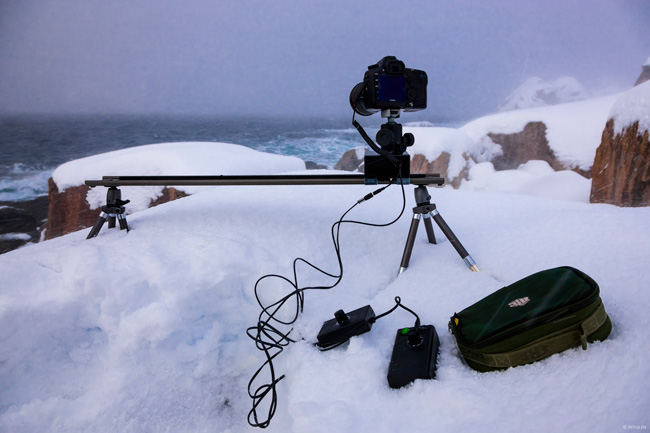
Lorem ipsum dolor sit amet, consectetur adipiscing elit, sed do eiusmod tempor incididunt ut labore et dolore magna aliqua. Ut enim ad minim veniam, quis nostrud exercitation ullamco laboris nisi ut aliquip ex ea commodo consequat. Duis aute irure dolor in reprehenderit in voluptate velit esse cillum dolore eu fugiat nulla pariatur. Excepteur sint occaecat cupidatat non proident, sunt in culpa qui officia deserunt mollit anim id est laborum.
Lorem ipsum dolor sit amet, consectetur adipiscing elit, sed do eiusmod tempor incididunt ut labore et dolore magna aliqua. Ut enim ad minim veniam, quis nostrud exercitation ullamco laboris nisi ut aliquip ex ea commodo consequat. Duis aute irure dolor in reprehenderit in voluptate velit esse cillum dolore eu fugiat nulla pariatur. Excepteur sint occaecat cupidatat non proident, sunt in culpa qui officia deserunt mollit anim id est laborum.
Lorem ipsum dolor sit amet, consectetur adipiscing elit, sed do eiusmod tempor incididunt ut labore et dolore magna aliqua. Ut enim ad minim veniam, quis nostrud exercitation ullamco laboris nisi ut aliquip ex ea commodo consequat. Duis aute irure dolor in reprehenderit in voluptate velit esse cillum dolore eu fugiat nulla pariatur. Excepteur sint occaecat cupidatat non proident, sunt in culpa qui officia deserunt mollit anim id est laborum.
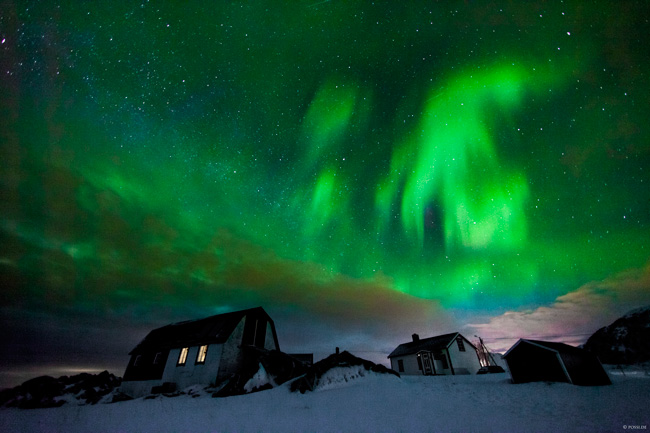
Lorem ipsum dolor sit amet, consectetur adipiscing elit, sed do eiusmod tempor incididunt ut labore et dolore magna aliqua. Ut enim ad minim veniam, quis nostrud exercitation ullamco laboris nisi ut aliquip ex ea commodo consequat. Duis aute irure dolor in reprehenderit in voluptate velit esse cillum dolore eu fugiat nulla pariatur. Excepteur sint occaecat cupidatat non proident, sunt in culpa qui officia deserunt mollit anim id est laborum.
Lorem ipsum dolor sit amet, consectetur adipiscing elit, sed do eiusmod tempor incididunt ut labore et dolore magna aliqua. Ut enim ad minim veniam, quis nostrud exercitation ullamco laboris nisi ut aliquip ex ea commodo consequat. Duis aute irure dolor in reprehenderit in voluptate velit esse cillum dolore eu fugiat nulla pariatur. Excepteur sint occaecat cupidatat non proident, sunt in culpa qui officia deserunt mollit anim id est laborum.
Lorem ipsum dolor sit amet, consectetur adipiscing elit, sed do eiusmod tempor incididunt ut labore et dolore magna aliqua. Ut enim ad minim veniam, quis nostrud exercitation ullamco laboris nisi ut aliquip ex ea commodo consequat. Duis aute irure dolor in reprehenderit in voluptate velit esse cillum dolore eu fugiat nulla pariatur. Excepteur sint occaecat cupidatat non proident, sunt in culpa qui officia deserunt mollit anim id est laborum.

Lorem ipsum dolor sit amet, consectetur adipiscing elit, sed do eiusmod tempor incididunt ut labore et dolore magna aliqua. Ut enim ad minim veniam, quis nostrud exercitation ullamco laboris nisi ut aliquip ex ea commodo consequat. Duis aute irure dolor in reprehenderit in voluptate velit esse cillum dolore eu fugiat nulla pariatur. Excepteur sint occaecat cupidatat non proident, sunt in culpa qui officia deserunt mollit anim id est laborum.
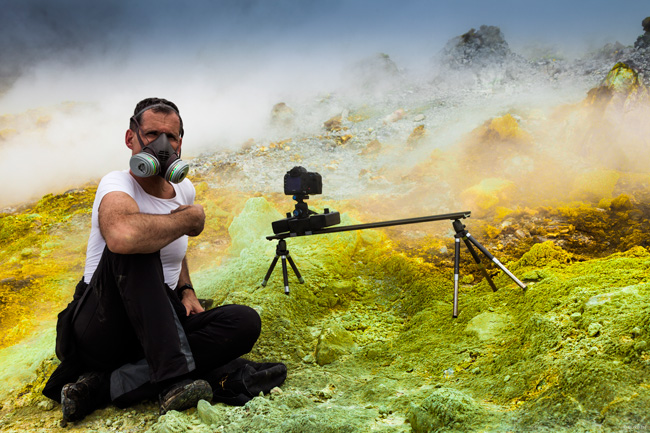
Lorem ipsum dolor sit amet, consectetur adipiscing elit, sed do eiusmod tempor incididunt ut labore et dolore magna aliqua. Ut enim ad minim veniam, quis nostrud exercitation ullamco laboris nisi ut aliquip ex ea commodo consequat. Duis aute irure dolor in reprehenderit in voluptate velit esse cillum dolore eu fugiat nulla pariatur. Excepteur sint occaecat cupidatat non proident, sunt in culpa qui officia deserunt mollit anim id est laborum.
Lorem ipsum dolor sit amet, consectetur adipiscing elit, sed do eiusmod tempor incididunt ut labore et dolore magna aliqua. Ut enim ad minim veniam, quis nostrud exercitation ullamco laboris nisi ut aliquip ex ea commodo consequat. Duis aute irure dolor in reprehenderit in voluptate velit esse cillum dolore eu fugiat nulla pariatur. Excepteur sint occaecat cupidatat non proident, sunt in culpa qui officia deserunt mollit anim id est laborum.
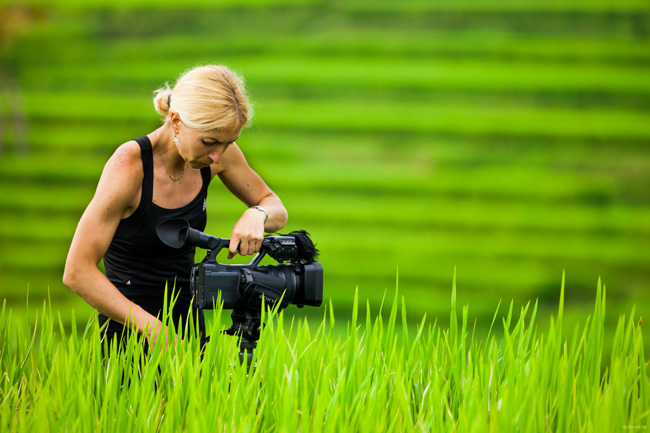
Lorem ipsum dolor sit amet, consectetur adipiscing elit, sed do eiusmod tempor incididunt ut labore et dolore magna aliqua. Ut enim ad minim veniam, quis nostrud exercitation ullamco laboris nisi ut aliquip ex ea commodo consequat. Duis aute irure dolor in reprehenderit in voluptate velit esse cillum dolore eu fugiat nulla pariatur. Excepteur sint occaecat cupidatat non proident, sunt in culpa qui officia deserunt mollit anim id est laborum.
Lorem ipsum dolor sit amet, consectetur adipiscing elit, sed do eiusmod tempor incididunt ut labore et dolore magna aliqua. Ut enim ad minim veniam, quis nostrud exercitation ullamco laboris nisi ut aliquip ex ea commodo consequat. Duis aute irure dolor in reprehenderit in voluptate velit esse cillum dolore eu fugiat nulla pariatur. Excepteur sint occaecat cupidatat non proident, sunt in culpa qui officia deserunt mollit anim id est laborum.
Lorem ipsum dolor sit amet, consectetur adipiscing elit, sed do eiusmod tempor incididunt ut labore et dolore magna aliqua. Ut enim ad minim veniam, quis nostrud exercitation ullamco laboris nisi ut aliquip ex ea commodo consequat. Duis aute irure dolor in reprehenderit in voluptate velit esse cillum dolore eu fugiat nulla pariatur. Excepteur sint occaecat cupidatat non proident, sunt in culpa qui officia deserunt mollit anim id est laborum.
Lorem ipsum dolor sit amet, consectetur adipiscing elit, sed do eiusmod tempor incididunt ut labore et dolore magna aliqua. Ut enim ad minim veniam, quis nostrud exercitation ullamco laboris nisi ut aliquip ex ea commodo consequat. Duis aute irure dolor in reprehenderit in voluptate velit esse cillum dolore eu fugiat nulla pariatur. Excepteur sint occaecat cupidatat non proident, sunt in culpa qui officia deserunt mollit anim id est laborum.
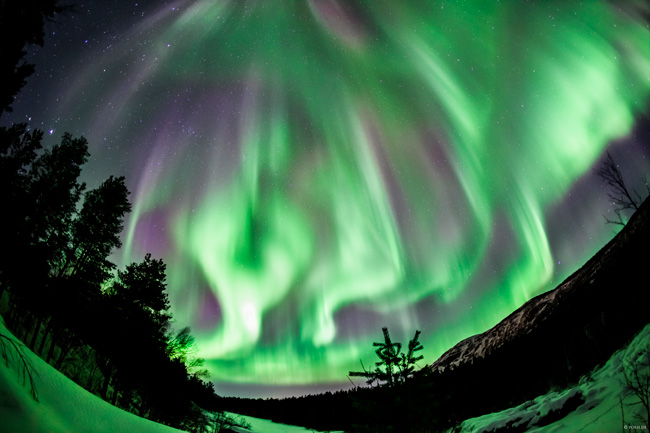
Lorem ipsum dolor sit amet, consectetur adipiscing elit, sed do eiusmod tempor incididunt ut labore et dolore magna aliqua. Ut enim ad minim veniam, quis nostrud exercitation ullamco laboris nisi ut aliquip ex ea commodo consequat. Duis aute irure dolor in reprehenderit in voluptate velit esse cillum dolore eu fugiat nulla pariatur. Excepteur sint occaecat cupidatat non proident, sunt in culpa qui officia deserunt mollit anim id est laborum.
Lorem ipsum dolor sit amet, consectetur adipiscing elit, sed do eiusmod tempor incididunt ut labore et dolore magna aliqua. Ut enim ad minim veniam, quis nostrud exercitation ullamco laboris nisi ut aliquip ex ea commodo consequat. Duis aute irure dolor in reprehenderit in voluptate velit esse cillum dolore eu fugiat nulla pariatur. Excepteur sint occaecat cupidatat non proident, sunt in culpa qui officia deserunt mollit anim id est laborum.
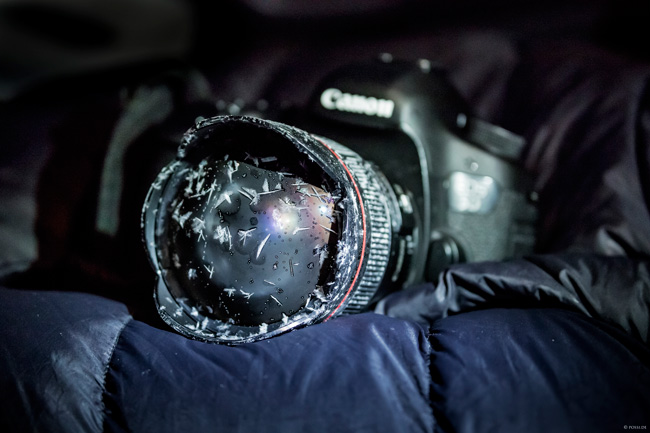
Lorem ipsum dolor sit amet, consectetur adipiscing elit, sed do eiusmod tempor incididunt ut labore et dolore magna aliqua. Ut enim ad minim veniam, quis nostrud exercitation ullamco laboris nisi ut aliquip ex ea commodo consequat. Duis aute irure dolor in reprehenderit in voluptate velit esse cillum dolore eu fugiat nulla pariatur. Excepteur sint occaecat cupidatat non proident, sunt in culpa qui officia deserunt mollit anim id est laborum.
Lorem ipsum dolor sit amet, consectetur adipiscing elit, sed do eiusmod tempor incididunt ut labore et dolore magna aliqua. Ut enim ad minim veniam, quis nostrud exercitation ullamco laboris nisi ut aliquip ex ea commodo consequat. Duis aute irure dolor in reprehenderit in voluptate velit esse cillum dolore eu fugiat nulla pariatur. Excepteur sint occaecat cupidatat non proident, sunt in culpa qui officia deserunt mollit anim id est laborum.
Lorem ipsum dolor sit amet, consectetur adipiscing elit, sed do eiusmod tempor incididunt ut labore et dolore magna aliqua. Ut enim ad minim veniam, quis nostrud exercitation ullamco laboris nisi ut aliquip ex ea commodo consequat. Duis aute irure dolor in reprehenderit in voluptate velit esse cillum dolore eu fugiat nulla pariatur. Excepteur sint occaecat cupidatat non proident, sunt in culpa qui officia deserunt mollit anim id est laborum.
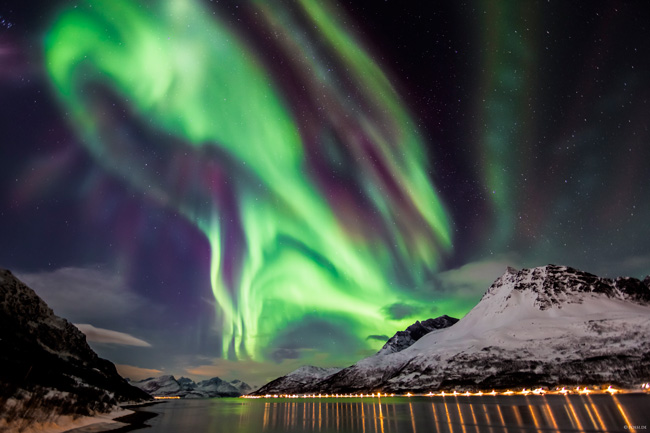
Lorem ipsum dolor sit amet, consectetur adipiscing elit, sed do eiusmod tempor incididunt ut labore et dolore magna aliqua. Ut enim ad minim veniam, quis nostrud exercitation ullamco laboris nisi ut aliquip ex ea commodo consequat. Duis aute irure dolor in reprehenderit in voluptate velit esse cillum dolore eu fugiat nulla pariatur. Excepteur sint occaecat cupidatat non proident, sunt in culpa qui officia deserunt mollit anim id est laborum.
Lorem ipsum dolor sit amet, consectetur adipiscing elit, sed do eiusmod tempor incididunt ut labore et dolore magna aliqua. Ut enim ad minim veniam, quis nostrud exercitation ullamco laboris nisi ut aliquip ex ea commodo consequat. Duis aute irure dolor in reprehenderit in voluptate velit esse cillum dolore eu fugiat nulla pariatur. Excepteur sint occaecat cupidatat non proident, sunt in culpa qui officia deserunt mollit anim id est laborum.
Lorem ipsum dolor sit amet, consectetur adipiscing elit, sed do eiusmod tempor incididunt ut labore et dolore magna aliqua. Ut enim ad minim veniam, quis nostrud exercitation ullamco laboris nisi ut aliquip ex ea commodo consequat. Duis aute irure dolor in reprehenderit in voluptate velit esse cillum dolore eu fugiat nulla pariatur. Excepteur sint occaecat cupidatat non proident, sunt in culpa qui officia deserunt mollit anim id est laborum.
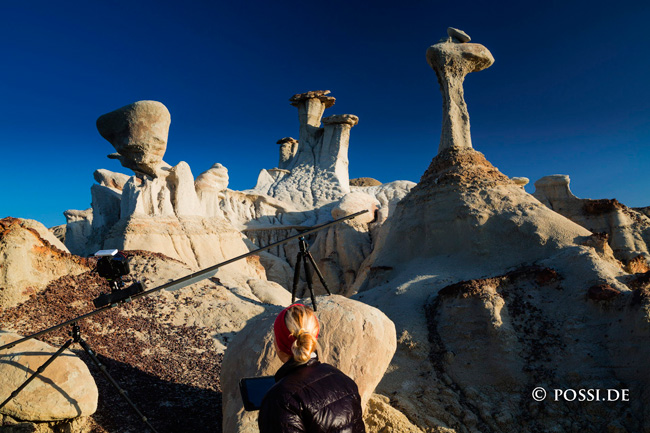
Lorem ipsum dolor sit amet, consectetur adipiscing elit, sed do eiusmod tempor incididunt ut labore et dolore magna aliqua. Ut enim ad minim veniam, quis nostrud exercitation ullamco laboris nisi ut aliquip ex ea commodo consequat. Duis aute irure dolor in reprehenderit in voluptate velit esse cillum dolore eu fugiat nulla pariatur. Excepteur sint occaecat cupidatat non proident, sunt in culpa qui officia deserunt mollit anim id est laborum.
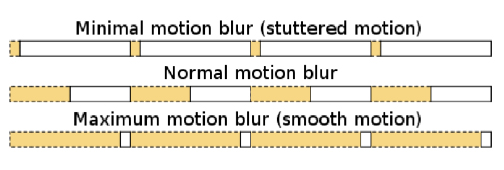
Lorem ipsum dolor sit amet, consectetur adipiscing elit, sed do eiusmod tempor incididunt ut labore et dolore magna aliqua. Ut enim ad minim veniam, quis nostrud exercitation ullamco laboris nisi ut aliquip ex ea commodo consequat. Duis aute irure dolor in reprehenderit in voluptate velit esse cillum dolore eu fugiat nulla pariatur. Excepteur sint occaecat cupidatat non proident, sunt in culpa qui officia deserunt mollit anim id est laborum.
Lorem ipsum dolor sit amet, consectetur adipiscing elit, sed do eiusmod tempor incididunt ut labore et dolore magna aliqua. Ut enim ad minim veniam, quis nostrud exercitation ullamco laboris nisi ut aliquip ex ea commodo consequat. Duis aute irure dolor in reprehenderit in voluptate velit esse cillum dolore eu fugiat nulla pariatur. Excepteur sint occaecat cupidatat non proident, sunt in culpa qui officia deserunt mollit anim id est laborum.
Lorem ipsum dolor sit amet, consectetur adipiscing elit, sed do eiusmod tempor incididunt ut labore et dolore magna aliqua. Ut enim ad minim veniam, quis nostrud exercitation ullamco laboris nisi ut aliquip ex ea commodo consequat. Duis aute irure dolor in reprehenderit in voluptate velit esse cillum dolore eu fugiat nulla pariatur. Excepteur sint occaecat cupidatat non proident, sunt in culpa qui officia deserunt mollit anim id est laborum.

Lorem ipsum dolor sit amet, consectetur adipiscing elit, sed do eiusmod tempor incididunt ut labore et dolore magna aliqua. Ut enim ad minim veniam, quis nostrud exercitation ullamco laboris nisi ut aliquip ex ea commodo consequat. Duis aute irure dolor in reprehenderit in voluptate velit esse cillum dolore eu fugiat nulla pariatur. Excepteur sint occaecat cupidatat non proident, sunt in culpa qui officia deserunt mollit anim id est laborum.
Lorem ipsum dolor sit amet, consectetur adipiscing elit, sed do eiusmod tempor incididunt ut labore et dolore magna aliqua. Ut enim ad minim veniam, quis nostrud exercitation ullamco laboris nisi ut aliquip ex ea commodo consequat. Duis aute irure dolor in reprehenderit in voluptate velit esse cillum dolore eu fugiat nulla pariatur. Excepteur sint occaecat cupidatat non proident, sunt in culpa qui officia deserunt mollit anim id est laborum.
Lorem ipsum dolor sit amet, consectetur adipiscing elit, sed do eiusmod tempor incididunt ut labore et dolore magna aliqua. Ut enim ad minim veniam, quis nostrud exercitation ullamco laboris nisi ut aliquip ex ea commodo consequat. Duis aute irure dolor in reprehenderit in voluptate velit esse cillum dolore eu fugiat nulla pariatur. Excepteur sint occaecat cupidatat non proident, sunt in culpa qui officia deserunt mollit anim id est laborum.
Lorem ipsum dolor sit amet, consectetur adipiscing elit, sed do eiusmod tempor incididunt ut labore et dolore magna aliqua. Ut enim ad minim veniam, quis nostrud exercitation ullamco laboris nisi ut aliquip ex ea commodo consequat. Duis aute irure dolor in reprehenderit in voluptate velit esse cillum dolore eu fugiat nulla pariatur. Excepteur sint occaecat cupidatat non proident, sunt in culpa qui officia deserunt mollit anim id est laborum.
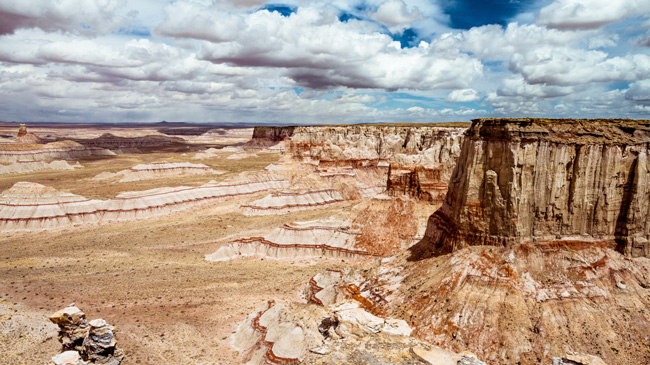
Lorem ipsum dolor sit amet, consectetur adipiscing elit, sed do eiusmod tempor incididunt ut labore et dolore magna aliqua. Ut enim ad minim veniam, quis nostrud exercitation ullamco laboris nisi ut aliquip ex ea commodo consequat. Duis aute irure dolor in reprehenderit in voluptate velit esse cillum dolore eu fugiat nulla pariatur. Excepteur sint occaecat cupidatat non proident, sunt in culpa qui officia deserunt mollit anim id est laborum.
Lorem ipsum dolor sit amet, consectetur adipiscing elit, sed do eiusmod tempor incididunt ut labore et dolore magna aliqua. Ut enim ad minim veniam, quis nostrud exercitation ullamco laboris nisi ut aliquip ex ea commodo consequat. Duis aute irure dolor in reprehenderit in voluptate velit esse cillum dolore eu fugiat nulla pariatur. Excepteur sint occaecat cupidatat non proident, sunt in culpa qui officia deserunt mollit anim id est laborum.
Lorem ipsum dolor sit amet, consectetur adipiscing elit, sed do eiusmod tempor incididunt ut labore et dolore magna aliqua. Ut enim ad minim veniam, quis nostrud exercitation ullamco laboris nisi ut aliquip ex ea commodo consequat. Duis aute irure dolor in reprehenderit in voluptate velit esse cillum dolore eu fugiat nulla pariatur. Excepteur sint occaecat cupidatat non proident, sunt in culpa qui officia deserunt mollit anim id est laborum.
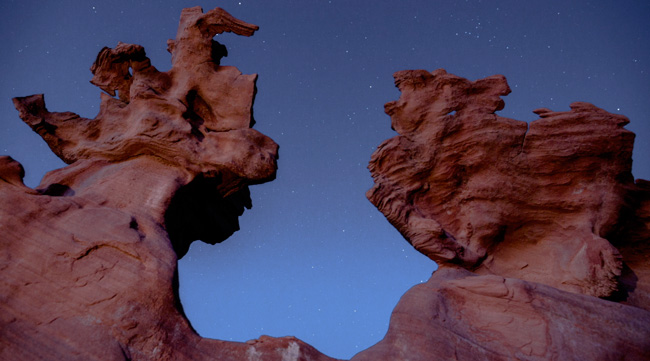
Lorem ipsum dolor sit amet, consectetur adipiscing elit, sed do eiusmod tempor incididunt ut labore et dolore magna aliqua. Ut enim ad minim veniam, quis nostrud exercitation ullamco laboris nisi ut aliquip ex ea commodo consequat. Duis aute irure dolor in reprehenderit in voluptate velit esse cillum dolore eu fugiat nulla pariatur. Excepteur sint occaecat cupidatat non proident, sunt in culpa qui officia deserunt mollit anim id est laborum.
Lorem ipsum dolor sit amet, consectetur adipiscing elit, sed do eiusmod tempor incididunt ut labore et dolore magna aliqua. Ut enim ad minim veniam, quis nostrud exercitation ullamco laboris nisi ut aliquip ex ea commodo consequat. Duis aute irure dolor in reprehenderit in voluptate velit esse cillum dolore eu fugiat nulla pariatur. Excepteur sint occaecat cupidatat non proident, sunt in culpa qui officia deserunt mollit anim id est laborum.
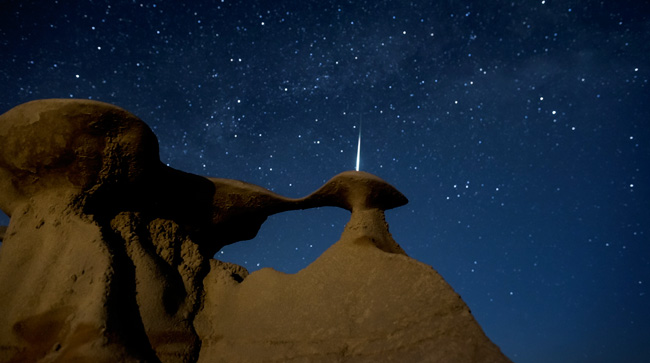
Lorem ipsum dolor sit amet, consectetur adipiscing elit, sed do eiusmod tempor incididunt ut labore et dolore magna aliqua. Ut enim ad minim veniam, quis nostrud exercitation ullamco laboris nisi ut aliquip ex ea commodo consequat. Duis aute irure dolor in reprehenderit in voluptate velit esse cillum dolore eu fugiat nulla pariatur. Excepteur sint occaecat cupidatat non proident, sunt in culpa qui officia deserunt mollit anim id est laborum.
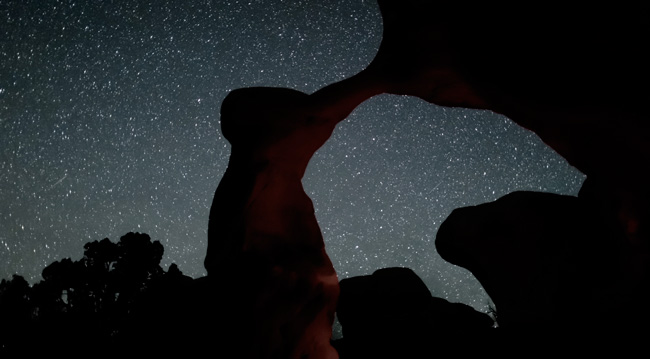
Lorem ipsum dolor sit amet, consectetur adipiscing elit, sed do eiusmod tempor incididunt ut labore et dolore magna aliqua. Ut enim ad minim veniam, quis nostrud exercitation ullamco laboris nisi ut aliquip ex ea commodo consequat. Duis aute irure dolor in reprehenderit in voluptate velit esse cillum dolore eu fugiat nulla pariatur. Excepteur sint occaecat cupidatat non proident, sunt in culpa qui officia deserunt mollit anim id est laborum.
Lorem ipsum dolor sit amet, consectetur adipiscing elit, sed do eiusmod tempor incididunt ut labore et dolore magna aliqua. Ut enim ad minim veniam, quis nostrud exercitation ullamco laboris nisi ut aliquip ex ea commodo consequat. Duis aute irure dolor in reprehenderit in voluptate velit esse cillum dolore eu fugiat nulla pariatur. Excepteur sint occaecat cupidatat non proident, sunt in culpa qui officia deserunt mollit anim id est laborum.
Lorem ipsum dolor sit amet, consectetur adipiscing elit, sed do eiusmod tempor incididunt ut labore et dolore magna aliqua. Ut enim ad minim veniam, quis nostrud exercitation ullamco laboris nisi ut aliquip ex ea commodo consequat. Duis aute irure dolor in reprehenderit in voluptate velit esse cillum dolore eu fugiat nulla pariatur. Excepteur sint occaecat cupidatat non proident, sunt in culpa qui officia deserunt mollit anim id est laborum.
Lorem ipsum dolor sit amet, consectetur adipiscing elit, sed do eiusmod tempor incididunt ut labore et dolore magna aliqua. Ut enim ad minim veniam, quis nostrud exercitation ullamco laboris nisi ut aliquip ex ea commodo consequat. Duis aute irure dolor in reprehenderit in voluptate velit esse cillum dolore eu fugiat nulla pariatur. Excepteur sint occaecat cupidatat non proident, sunt in culpa qui officia deserunt mollit anim id est laborum.
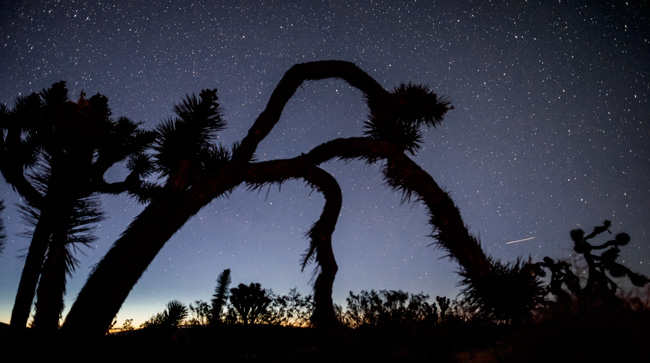
Lorem ipsum dolor sit amet, consectetur adipiscing elit, sed do eiusmod tempor incididunt ut labore et dolore magna aliqua. Ut enim ad minim veniam, quis nostrud exercitation ullamco laboris nisi ut aliquip ex ea commodo consequat. Duis aute irure dolor in reprehenderit in voluptate velit esse cillum dolore eu fugiat nulla pariatur. Excepteur sint occaecat cupidatat non proident, sunt in culpa qui officia deserunt mollit anim id est laborum.
Lorem ipsum dolor sit amet, consectetur adipiscing elit, sed do eiusmod tempor incididunt ut labore et dolore magna aliqua. Ut enim ad minim veniam, quis nostrud exercitation ullamco laboris nisi ut aliquip ex ea commodo consequat. Duis aute irure dolor in reprehenderit in voluptate velit esse cillum dolore eu fugiat nulla pariatur. Excepteur sint occaecat cupidatat non proident, sunt in culpa qui officia deserunt mollit anim id est laborum.
Lorem ipsum dolor sit amet, consectetur adipiscing elit, sed do eiusmod tempor incididunt ut labore et dolore magna aliqua. Ut enim ad minim veniam, quis nostrud exercitation ullamco laboris nisi ut aliquip ex ea commodo consequat. Duis aute irure dolor in reprehenderit in voluptate velit esse cillum dolore eu fugiat nulla pariatur. Excepteur sint occaecat cupidatat non proident, sunt in culpa qui officia deserunt mollit anim id est laborum.
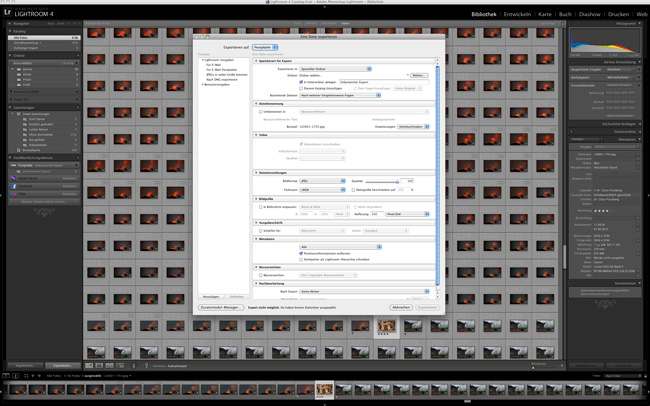
Lorem ipsum dolor sit amet, consectetur adipiscing elit, sed do eiusmod tempor incididunt ut labore et dolore magna aliqua. Ut enim ad minim veniam, quis nostrud exercitation ullamco laboris nisi ut aliquip ex ea commodo consequat. Duis aute irure dolor in reprehenderit in voluptate velit esse cillum dolore eu fugiat nulla pariatur. Excepteur sint occaecat cupidatat non proident, sunt in culpa qui officia deserunt mollit anim id est laborum.
Lorem ipsum dolor sit amet, consectetur adipiscing elit, sed do eiusmod tempor incididunt ut labore et dolore magna aliqua. Ut enim ad minim veniam, quis nostrud exercitation ullamco laboris nisi ut aliquip ex ea commodo consequat. Duis aute irure dolor in reprehenderit in voluptate velit esse cillum dolore eu fugiat nulla pariatur. Excepteur sint occaecat cupidatat non proident, sunt in culpa qui officia deserunt mollit anim id est laborum.
You May Also Enjoy...
Celebrating Alternative Photography: Cyanotype Prints with Ashok Viswanathan
FacebookTweet By: Ashok Viswanathan – FFIP, EFIAP.PPSA Cyanotype is one of the earliest printing processes, dating from 1842 by Sir John Herschel, shortlyafter the discovery
Celebrating Alternative Photography: Mastering the Van Dyke Process with Ashok Viswanathan
FacebookTweet Long-time Lula member, Ashok Viswanthan, kindly offered to share his approach and methods for alternative photography processes. I hope you enjoy his detailed “how-to”
